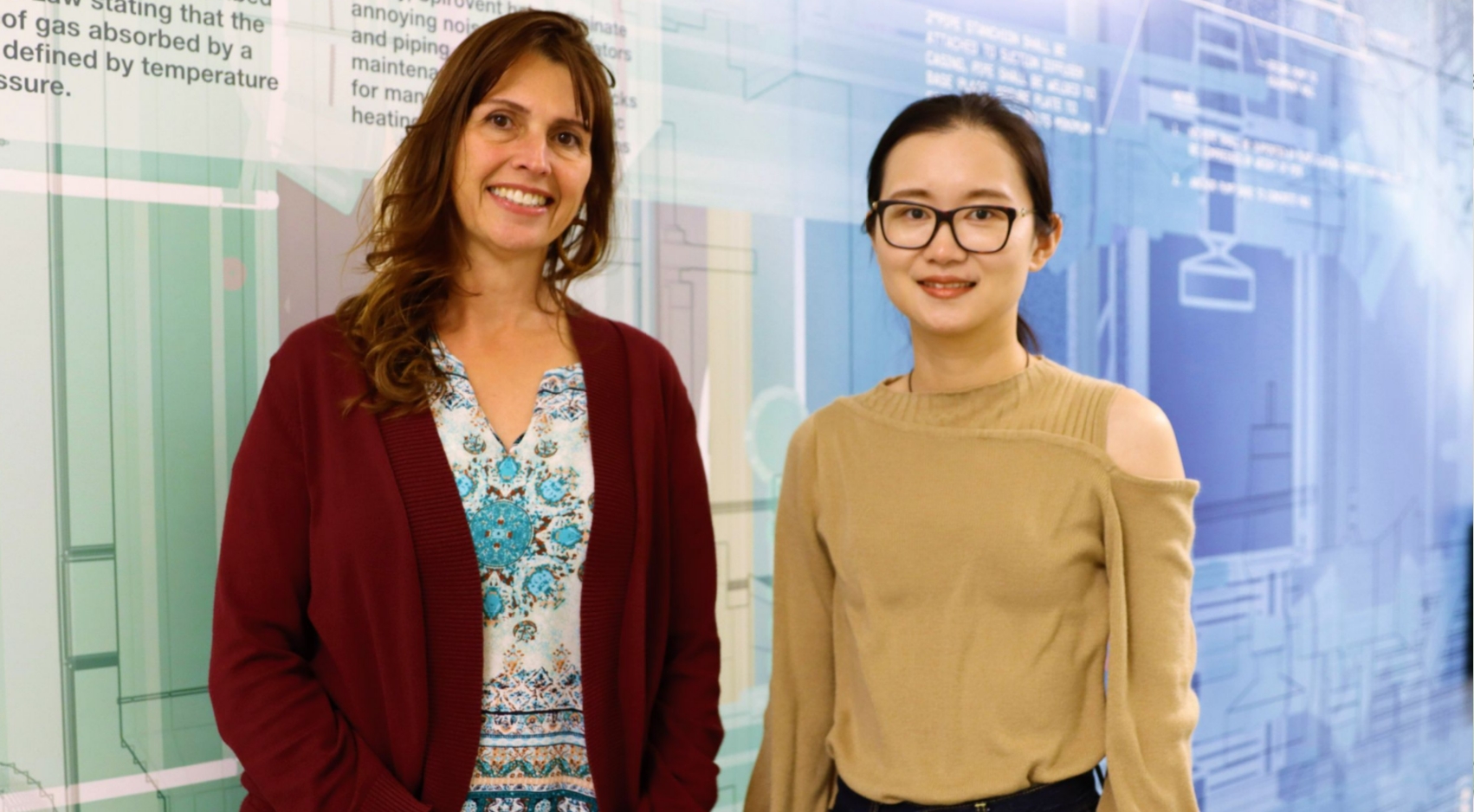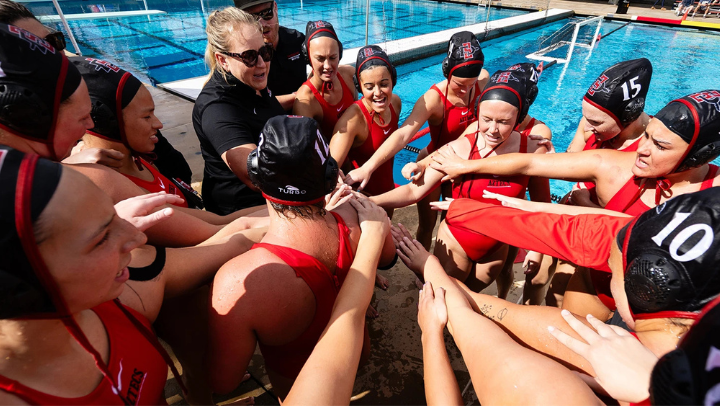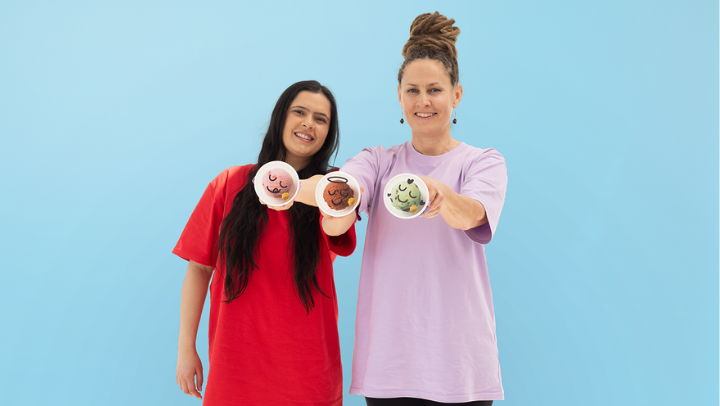A Q&A with Two of SDBJ's Top 50 Women of Influence in Engineering
SDSU professors Junfei Xie and Natalie Mladenov talk about their SDBJ distinction and the future of women in engineering

Women Rock. Just in time for International Women’s Day, electrical and computer engineering professor Junfei Xie, and water resources engineering professor Natalie Mladenov have been awarded the distinction of being among the 50 Top Women of Influence in Engineering by the San Diego Business Journal.
Xie and Mladenov have earned additional accolades for their achievements in the historically male-centric area of engineering.
As a recipient of a 2021 National Science Foundation CAREER Award for her work to develop a flying cloud computing system — and with multiple research grants — Xie also serves as the SDSU SysteMs & InteLligEnce (SMILE) laboratory director.
Mladenov is a William E. Leonhard Jr. Endowed Chair, 2022 Outstanding Engineering Educator Award by the San Diego County Engineering Council, and serves as the laboratory director for the Water Innovation and Reuse Lab (WIRlab).
SDSU NewsCenter’s Melinda Sevilla spoke with Xie and Mladenov about their SDBJ recognition and the future of women in engineering at SDSU.
You are both incredible engineers and professors in your own rights. How did you become interested in engineering?
Xie: The advancement in engineering has significantly improved the quality of people’s lives. After witnessing the changes engineering has made to our daily life and realizing the important role it plays, I became interested in engineering and excited about what I’m doing.
Mladenov: My father was an electrical engineer and my mother was a high school teacher. Since my parents were immigrants to the U.S. and English was not their first language, they could not hold the same jobs here as they had back in their home countries of Bulgaria and Czechoslovakia. I knew that they had sacrificed a lot to get here, so I was motivated to go to college, but engineering was honestly not my first choice. What I really wanted was to be an architect, but that degree was not available at my university. I chose civil engineering because of its connection to structures and buildings. As I was exposed to ecology, geology, and environmental engineering courses, my goals changed; environmental engineering and the natural sciences inspired me. I learned about environmental challenges and realized that I wanted to be involved in solutions to environmental problems.
Which women inspired you to pursue engineering?
Xie: My Ph.D. advisor, Dr. Yan Wan, is my role model who has motivated and inspired me to pursue a career in engineering. She is a very successful engineer, an excellent mentor and friend.
Mladenov: I did not have a female role model who inspired me to pursue engineering. When I started pursuing my B.S. degree in the 90's, there were very few female engineering professors. I was often the only woman in my class. I knew that my performance would either reinforce or challenge men's stereotypes of women in engineering. So of course, I would strive to get the highest grades, and luckily, I enjoyed the rigor and challenges of engineering courses, so the grades were not really a problem. It was not until graduate school, when I took a course in applied stream ecology from Professor Diane McKnight, that I found someone who had the kind of career that I wanted. Dr. McKnight was in the field, getting her hands dirty solving real engineering problems in the environment. I started accompanying her students to collect samples from polluted streams in heavily mined areas in Colorado. I found out that her students were even going to Antarctica to do field research. Not only that, she was a mother and was balancing her career with her family life. She was my inspiration.
What are you most proud of in your career up to this point?
Xie: What I am most proud of are the students I have mentored. Seeing my students becoming successful in their academic study and engineering careers makes me feel the most accomplished.
Mladenov: I am most proud of the many students who I've mentored who have gone on to pursue their dreams. One of my students just received a Fulbright Scholarship and is in Trinidad pursuing his doctoral research. There are dozens of students who I have worked with through the Water Innovation and Reuse Lab, and now they have gone on to do great things in government, industry, and academia. Many of them are making a big impact right here in San Diego.
What is the importance of having women in engineering in this historically male-centric field?
Xie: As women generally have different experiences than men, having women in engineering will bring new ideas, new perspectives, and new solutions, leading to better products and services.
Mladenov: The number one reason to have women in male-dominated fields like engineering is that you need their skills and perspectives. Engineering is all about design — you absolutely need female perspectives, experiences, and insights to enrich the process and lead to a better final product. There is no reason why 50% or more of engineers should not be female. Really it's not just increasing the number of women in engineering, but rather increasing the input from all groups that are underrepresented in engineering. We need to diversify our engineering workforce in order to make the U.S. more competitive in engineering.
As we celebrate SDSU’s 125th anniversary, what do you hope to see in the next 125 years for female engineers at SDSU?
Xie: I hope to see more female students to pursue education in the College of Engineering, more female engineering faculty to join the big SDSU family, and more inspiring and success stories of women engineers.
Mladenov: In my opinion, I think that in the next decade, gaining support from our community and from the State of California to provide independent doctoral programs is critical, not to mention a social justice issue for our Hispanic-Serving Institution. That will set our course for the next 125 years and help put us on the path to becoming a unique R1 doctoral university, one that really has students and our binational community at its core. If we can do this, then in the next 125 years, SDSU will continue attracting our amazing local talent, as well as students and faculty from all over the country, and I envision that our deepened connections to our Imperial Valley campus and our expansion to Mission Valley are going to enable that growth.
This interview has been edited for length and clarity.



